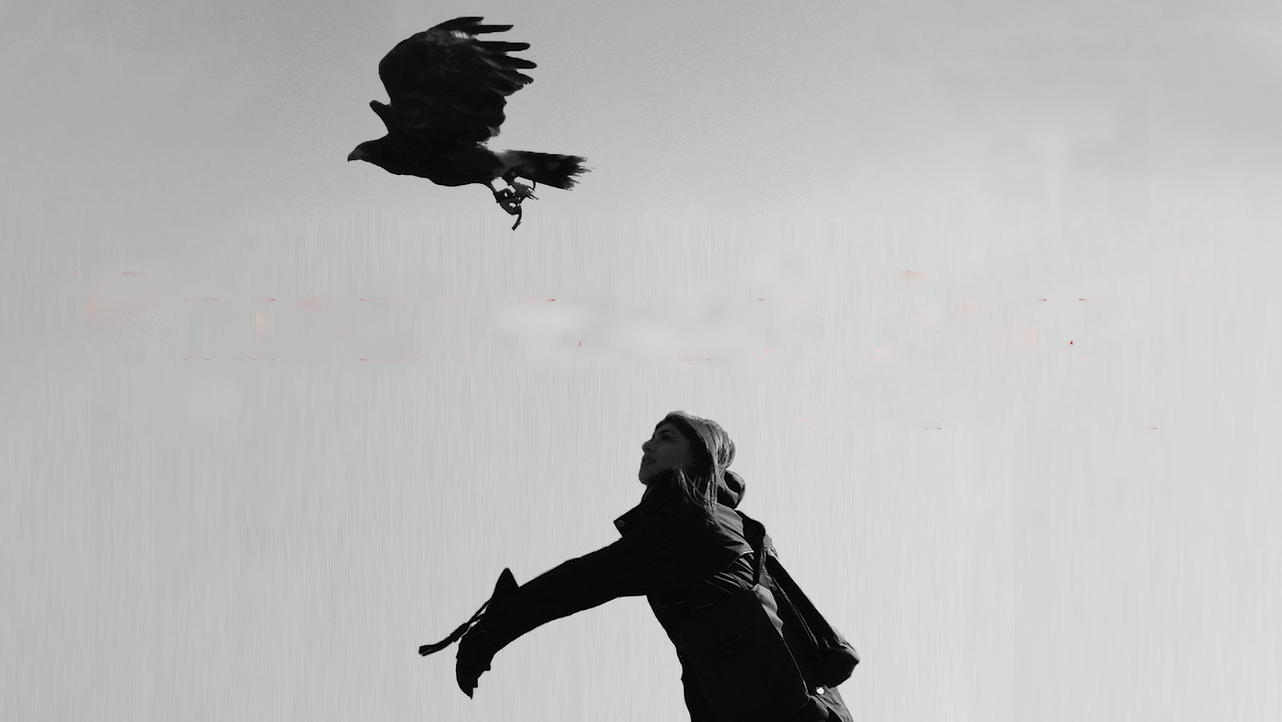HAWK
a tangled tale of love, care and abuse.
What does it take to train a raptor? Some can, some can't.
Brian is not the only one with hawk problems…
A hawk/human relationship is central to this piece. Bird and man battle between a longing for freedom and a need for restraint. Each creature is beautiful, strange and captivating. The wild bird exposes the tamer, clawing past truths into the present. Mutually dangerous and alien they are compelled to endure each other’s nurture, shame, abuse and love.
Hawk opens with Brian and his assistant Jamie doing a hawk display in the village. They meet a stranger who’s looking for some meaning in her life. Turns out that’s what they’re all looking for. And they find it - or not - through hawks.
“With Hawk, Gabrielle puts her Transformation practice front-and-centre. No longer is it just a highly useful means of character development in rehearsal but instead it is the very medium through which the story of Hawk is told. The constant shifting of the performers between human and animal states is not only a mesmerising thing to watch in and of itself but also raises questions of ethics and morality as the meaning we attach to certain actions changes as the performers transform before our eyes, e.g. the audience watch a hawk being bound suddenly transform into a woman being tied up. The subtle and specific work that Gabrielle inspires allows the performers to exist on this ‘knife-edge state' between human and hawk, giving the company ample opportunities to explore numerous topics within this rich seam of expression. To my knowledge, there is no one else, at least in the UK theatre scene, utilising such specific and committed Transformation work in this way.”
David Cumming, co- AD of Operation Mincemeat. Actor, Director, Theatre-Maker, Musician.
The actors in Hawk physically appear and move as raptors. In so doing they allow us a fresh sight of our own human behaviour. Hawk spins intensely personal stories around the raw and natural.
Background
Hawk is innovative in that it uses the actor-training techniques of Transformation and Imaginative Improvisation of the unique Copeau-St Denis-Blatchley-Clouzot-Moleta lineage as an intrinsic method for devising. Not merely does it inform the physical development of the actor into the wild creature, transformation into the human, and a richly imaginative physical world, but pivotally, it creates the interwoven stories of this piece.
Over a process of years we have spent time observing hawks and their world. The relationships between them and their austringers - the humans that work with them, train them, hunt with them, feed them, starve them, love them. We have looked at Harris hawks and goshawks, how they walk, how they fly, how they eat, how they mate, how they move. In transforming physically, both into hawks and the humans that come from them, we have developed a tangle of stories and images. We have discovered a hidden world of a rich and poetic vocabulary which belongs to this ancient way of life. We have been inspired too by brilliant people who have written inspiringly about equally brilliant raptors - William Shakespeare, Helen Macdonald, Gerald Summers, Barry Hines, St John of the Cross, T.H. White. In looking at what it is to be a hawk, we have found bigger questions, and no neat answers, about what it means to be human.
The show has emerged over a number of years, and we are grateful particularly for support for development of the show and the company along the way from Arts Council England, RADA Festival, and School of Arts, University of Kent.
Comments from Audience feedback on Hawk:
“Fabulous acting and movement”
“Rich with meaning”
“An amazing journey in an hour.”
“Original and Bold”
“Wonderfully innovative and absorbing”
“It was visually superb! Engaging and confusing and disturbing but all in a good way!”
“All the performers were superb!”
“Wild and Visceral”
“Beautiful, subtle and engaging”
“Beautiful, detailed study on hawks, surreal funny moments. Great images.”
“The constant shifting between human and hawk was fascinating to watch.”
“You bring us, the audience, to the idea that freedom is not, in fact, our most valuable human attribute.”
“It really does fly”
Press for other Movement Direction work by Gabrielle Moleta
“powerful lines and relatable images will remain with the audience as they leave the theatre”, ★★★★ spyinthestalls (Tiger Under the Skin, New Public)
“one of the most moving celebrations of Shakespeare I’ve experienced” Michael Billington-The Guardian (Shakespeare Within the Abbey 2019, Shakespeare’s Globe)
“The three actors have a clear connection, helped by fantastic movement direction by Gabrielle Moleta. There is nothing surface-level about the choreography; each movement has a purpose and adds depth.” - ReviewsHub on Saint Hildegard

















